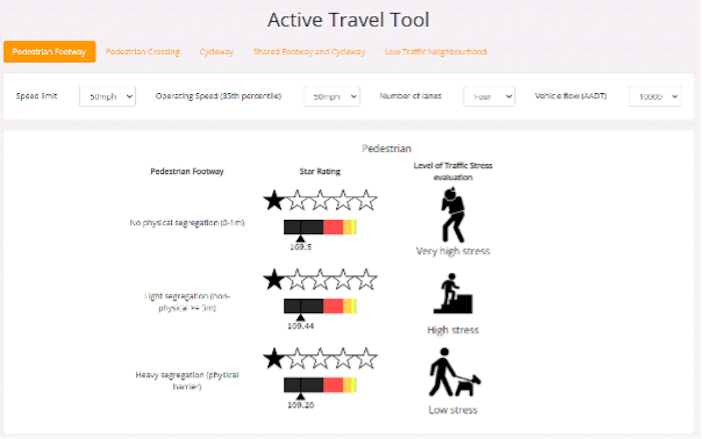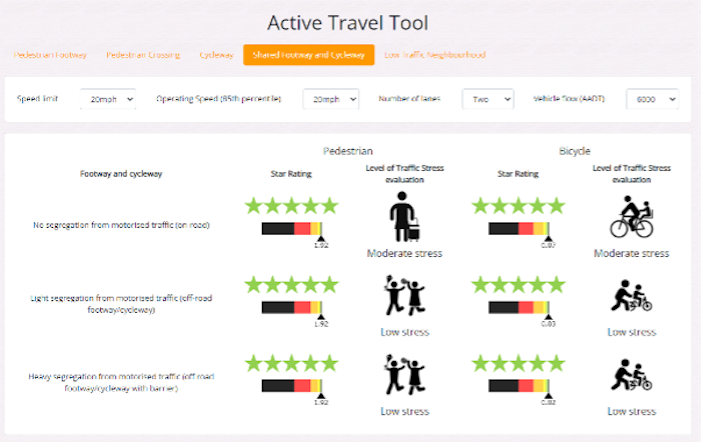A new planning tool, developed by the UK’s Road Safety Foundation, is being launched to help local authorities model the variables that make active travel safer, more pleasant and less stressful.
The Covid-19 pandemic brought about changes to travel habits with millions switching to shorter daily journeys, often walking or cycling. The UK government created an Active Travel Fund (ATF) to build on these new demands, with £200 million set aside for new walking and cycling schemes as part of an overall commitment to invest in active schemes. Development of the Road Safety Foundation’s modelling tool is funded by a grant from the Road Safety Trust, to help UK local authorities explore which ATF facilities work best to make walking and cycling safer.
“Increasing levels of active travel has environmental and health benefits, but to achieve truly healthy mobility, it must also be safe and feel safe,” says Kate Fuller, engineering director at Road Safety Foundation. “Cyclists and pedestrians are known as vulnerable road users for good reason: the frailty of the human body is clear when it shares the same space as motorised traffic. This tool helps to assess which different types of pedestrians and cyclists would feel comfortable using a particular road with different facilities. Making active travel more attractive may also release pent-up demand and help more people make the switch.”
The Road Safety Foundation has worked in partnership with Kent, Hampshire, West Sussex, Staffordshire and Warwickshire County Councils as well as Transport for Greater Manchester to develop an interactive demonstrator tool to assess how different facilities would perform both in terms of iRAP (The International Road Assessment Programme) Star Ratings and the level of traffic stress.

Highway authorities are invited to join the Road Safety Foundation in a webinar demonstration of the tool between 10.00 and 11.00 am on Friday 24 June, and the modelling tool will be made available for free widespread use.
“We have already had great feedback from local authorities who were involved in the early stages of development,” says Road Safety Foundation’s Fuller. “We look forward to building on the success of the Safer Roads Fund in our work with authorities, continuing to help deliver the best possible outcomes in making their roads safer.”

“Understanding risk and stress together enables us to tackle perceptions of safety which will assist with increasing uptake and acceptability of active travel modes,” says Stewart Fowler, Road Safety Intelligence and Innovations Team Leader for Kent County Council. “The tool is simple to use, offers a concise visual output and most helpfully; a comparable, evidenced based assessment. We will look to integrate the use of the tool at our optioneering stage for safety and active travel schemes to ensure risk and stress are considered as part of the scheme prioritisation.”
Images: Adobe Stock.





